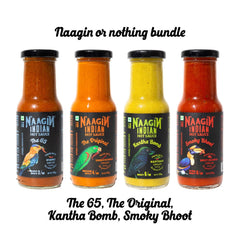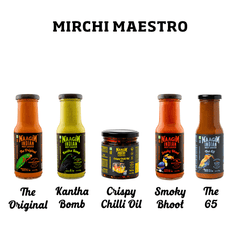
- Nov 21, 2024
- 0 Comment(s)
Thukpa vs. Ramen: Key Differences and Similarities You Didn’t Know About
Thukpa and Ramen are two of the most beloved noodle soups from Asian cuisines, offering a warm, comforting experience with noodles and a variety of toppings. While they share similarities, they represent distinct cultures and culinary traditions, each with its own charm.
If you’ve ever wondered how these noodle soups differ, let’s dive into their origins, ingredients, preparation methods, and the cultural nuances that make each a unique culinary delight.
1. Origins and Cultural Background
Thukpa:
Thukpa is a traditional noodle soup from Tibet, also popular in Nepal, Bhutan, and the Himalayan regions of India. It is a staple food in cold climates, offering nourishment and warmth. The dish embodies the flavours of Tibet, using local ingredients like vegetables, meat, and regional spices.
Ramen:
Ramen originated in Japan, although it has roots in Chinese noodle soups. Over time, ramen evolved into a symbol of Japanese fast food and comfort cuisine. Today, it is enjoyed worldwide, with each region of Japan offering its own twist on this iconic dish. Ramen’s global popularity has also inspired food trends across different cultures.
2. Broth Base: Flavor Profiles
Thukpa Broth:
Thukpa broth is typically made from chicken or vegetable stock, sometimes beef or pork, and flavoured with ginger, garlic, green chilies, and spices like turmeric or cumin. It’s light yet hearty, with a subtle warmth that’s perfect for colder climates.
Ramen Broth:
Ramen broth, on the other hand, is more varied and complex. It ranges from light and clear to rich and creamy, with four main categories: shoyu (soy sauce-based), miso (fermented soybean paste-based), shio (salt-based), and tonkotsu (pork bone-based). Often enriched with seaweed, soy sauce, and mirin, ramen broth takes hours to prepare, offering a deep, savoury flavour.
3. Noodles: Texture and Type
Thukpa Noodles:
Thukpa noodles, whether wheat or rice-based, vary by region. They’re often thicker and hand-formed, giving them a chewy texture. In many recipes, the noodles are cut shorter to make them easier to eat in the hot soup.
Ramen Noodles:
Ramen noodles are thin, wheat-based, and made with alkaline water (kansui), which gives them a yellow hue and springy texture. This unique preparation helps them hold their shape in rich broths.
4. Toppings and Ingredients
Thukpa Toppings:
Thukpa is topped with seasonal vegetables like carrots, spinach, green onions, and tomatoes, along with proteins such as chicken, beef, or tofu. Garnishes like cilantro, green onions, or a squeeze of lime add freshness to this nourishing dish.
Ramen Toppings:
Ramen toppings are more elaborate, often featuring sliced chashu pork, soft-boiled eggs, seaweed, bamboo shoots, and nori. These toppings are carefully chosen to balance flavours and textures, creating a harmonious umami-rich dish.
5. Spices and Seasoning
Thukpa Seasoning:
Thukpa relies on salt, turmeric, cumin, and sometimes Sichuan peppercorns for warmth. For those who prefer spice, chilli sauce or hot sauce can be added, making it a versatile dish for varying palates.
Ramen Seasoning:
Ramen focuses on umami, using soy sauce, miso, or salt as its base. Ingredients like dried fish or seaweed add depth, and chilli oil or rayu is often used for a spicy kick. The seasoning is designed to enhance the broth’s complexity.
6. Serving Style and Experience
Serving Style of Thukpa:
Thukpa is simple and comforting, often served as a filling meal in Himalayan homes. Its lighter broth makes it easy to sip between bites of noodles and vegetables.
Ramen Serving Style:
Ramen, especially in Japan, is a culinary experience. Slurping noodles is customary, believed to enhance the flavour and aroma. The visually appealing presentation and the ritualistic way of eating make ramen a memorable dish.
7. Regional Variations and Influences
Thukpa Variations:
Thukpa adapts to its region, with Nepalese versions often spicier and Himalayan recipes incorporating local herbs. Vegetarian, chicken, and beef versions reflect the diversity of ingredients available in each area.
Ramen Varieties:
Japan’s ramen varieties are vast, from Sapporo’s miso-based broth to Hakata’s tonkotsu and Tokyo’s shoyu. Each region adds its own twist, making ramen a dynamic dish that continues to evolve globally.
A Dash of Bold Flavour: Elevate Your Bowl
For those seeking to add a new dimension to these beloved soups, consider incorporating Naagin Original Hot Sauce (OG) or Smoke Bhoot Hot Sauce. A dash of Naagin sauce can elevate the broth, adding a rich, bold kick to Thukpa or enhancing the umami in ramen. Whether you prefer the warmth of Himalayan spices or the depth of Japanese flavours, Naagin’s versatility complements both beautifully.
Conclusion
Thukpa and Ramen may both be noodle soups, but they represent two distinct culinary worlds. Thukpa showcases the hearty, regional flavours of the Himalayas, while Ramen is a celebration of Japan’s meticulous attention to detail and umami-rich cuisine.
Next time you crave a comforting bowl of soup, try both to experience the flavours of Tibet and Japan—and don’t forget to spice it up with Naagin sauce for an extra twist!




























